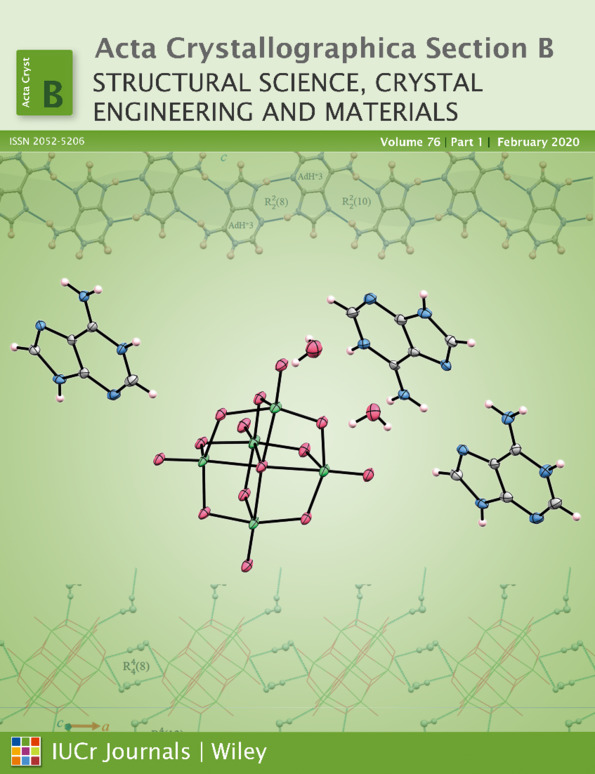Rb9–xAg3+xSc2(WO4)9: a new glaserite-related structure type, rubidium disorder, ionic conductivity
Abstract
A new triple tungstate Rb9−xAg3+xSc2(WO4)9 (0 ≤ x ≤ 0.15) synthesized by solid state reactions and spontaneous crystallization from melts presents a new structure type related to those of Cs7Na5Yb2(MoO4)9 and Na13Sr2Ta2(PO4)9. The title compound in centrosymmetric space group Cmcm contains dimers of two ScO6 octahedra sharing corners with three bridging WO4 tetrahedra. Three pairs of opposite terminal WO4 tetrahedra are additionally linked by AgO2 dumbbells to form {Ag3[Sc2(WO4)9]}9− groups, which together with some rubidium ions are packed in pseudohexagonal glaserite-like layers parallel to (001), but stacking of the layers is different in these three structures. In the title structure, the layers stack with a shift along the b axis and their interlayer space contains disordered Rb+ cations partially substituted by Ag+ ions. Almost linear chains of incompletely filled close Rb3a–Rb3d positions (the shortest distances Rb–Rb are 0.46 to 0.64 Å) are found to locate approximately along the b axis. This positional disorder and the presence of wide common quadrangular faces of Rb2 and Rb3a–Rb3d coordination polyhedra favor two-dimensional ionic conductivity in the (001) plane with Rb+ and Ag+ carriers, which was confirmed with bond valence sum (BVS) maps. Electrical conductivity measurements on Rb9Ag3Sc2(WO4)9 ceramics revealed a first-order superionic phase transition at 570 K with a sharp increase in the electrical conductivity. The conductivity σi = 1.8 × 10−3 S cm−1 at 690 K is comparable with the value of 1.0 × 10−3 S cm−1 (500 K) observed earlier for rubidium-ion transport in pyrochlore-like ferroelectric RbNbWO6.




